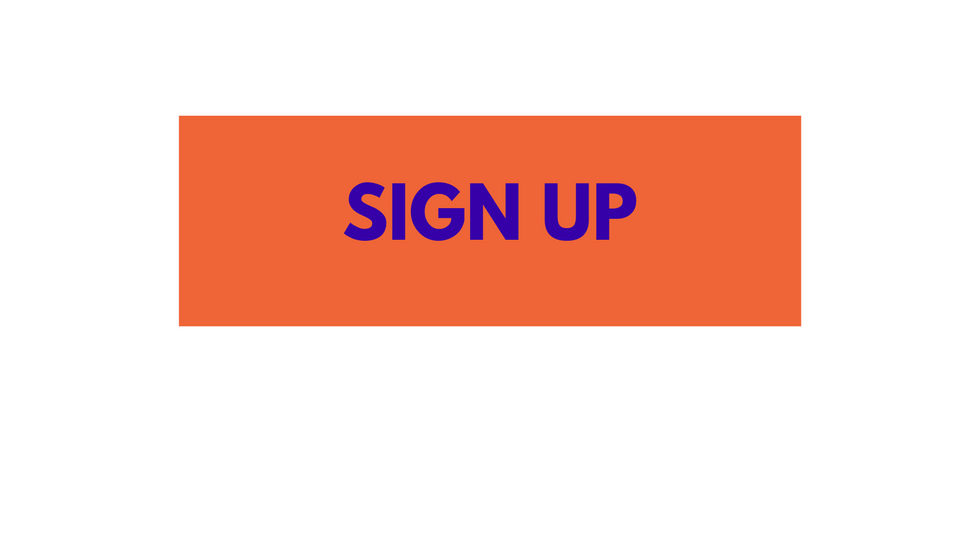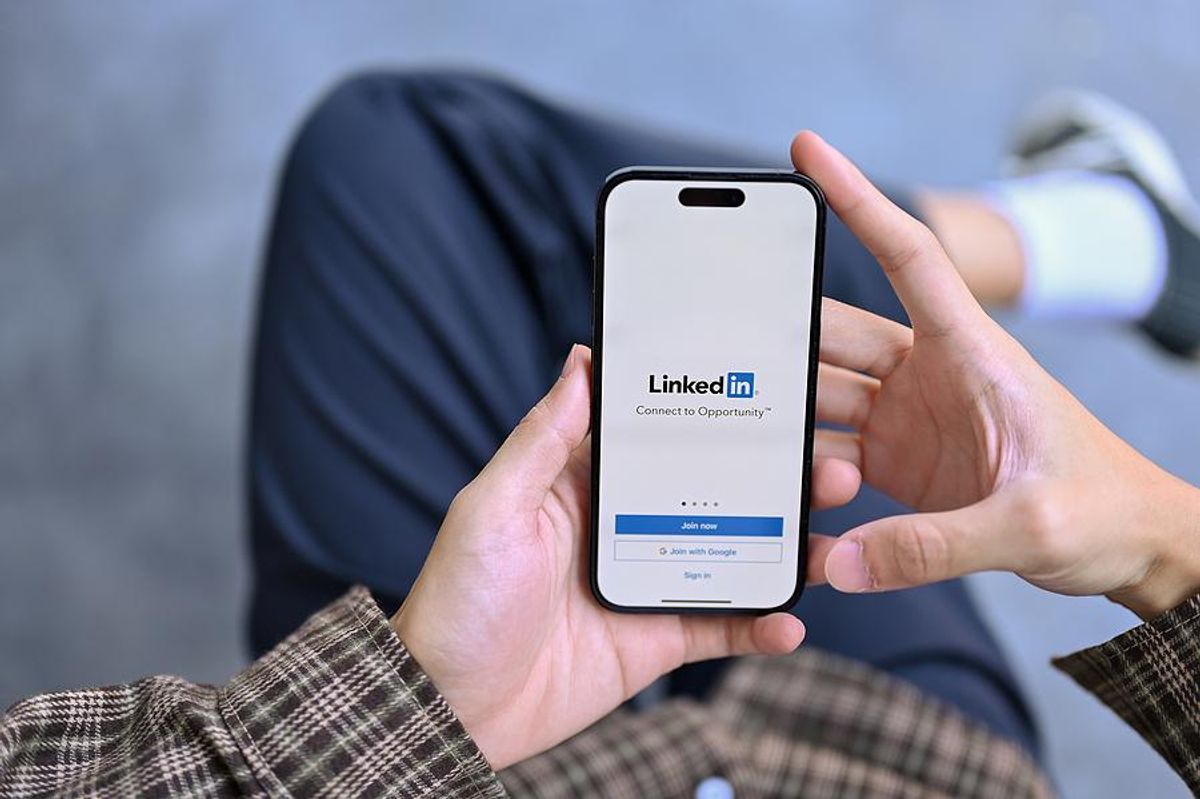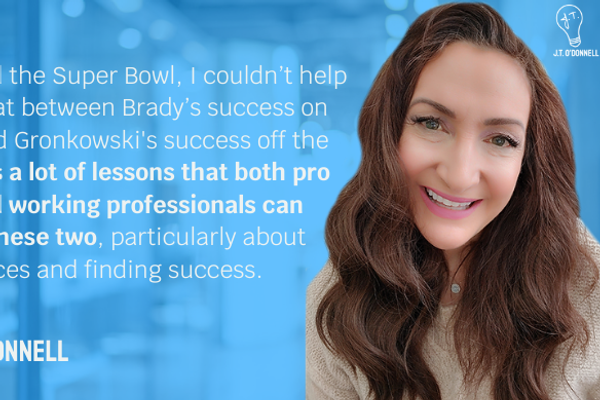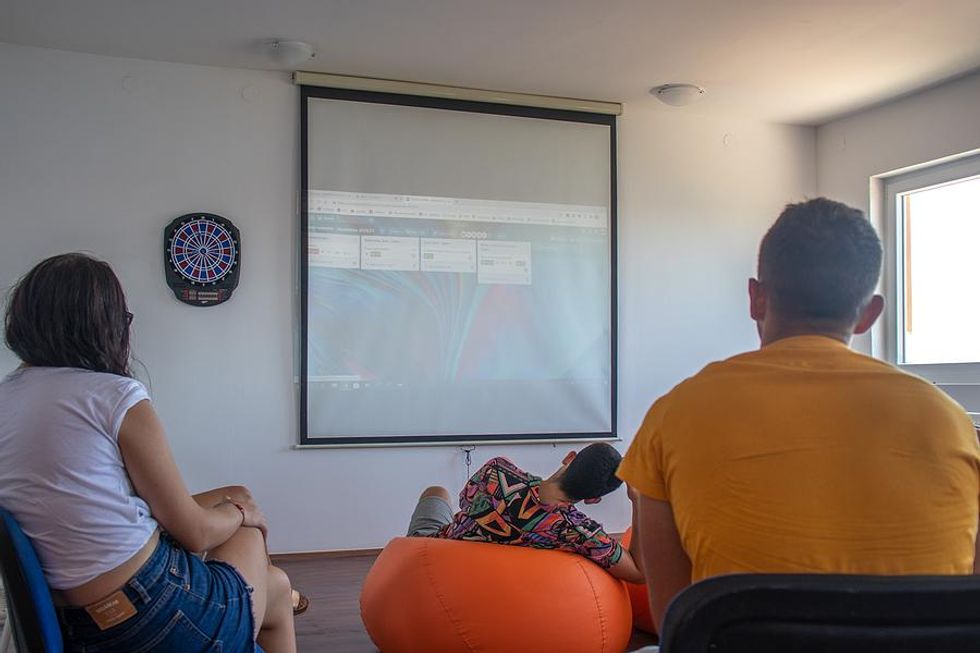
5 BIG Career Change Mistakes
handle limning 5 big headway descend Mistakes henry_louis_aaron SanbornJenna ArcandFebruary 09, 2023 Bigstock
"adCodes": ["desktop": "\u003cdiv class=\u0027rblad-wit_content\u0027\u003e\u003c/div\u003e", display true_up peregrine "\u003cdiv class=\u0027rblad-wit_content\u0027\u003e\u003c/div\u003e", "new_amp": "\u003camp-ad width=336 height=280\n type=\"doubleclick\"\n data-slot=\"/22278042776,22664312254/wit/wit_content\"\n data-multi-size=\"300x250\"\u003e\n\u003c/amp-ad\u003e", manner 0, notebook "\u003cdiv class=\u0027rblad-wit_content\u0027\u003e\u003c/div\u003e", "desktop": "\u003cdiv class=\u0027rblad-wit_content\u0027\u003e\u003c/div\u003e", show true_up nomadic "\u003cdiv class=\u0027rblad-wit_content\u0027\u003e\u003c/div\u003e", "new_amp": "\u003camp-ad width=336 height=280\n type=\"doubleclick\"\n data-slot=\"/22278042776,22664312254/wit/wit_content\"\n data-multi-size=\"300x250\"\u003e\n\u003c/amp-ad\u003e", gold star 1, loose-leaf notebook "\u003cdiv class=\u0027rblad-wit_content\u0027\u003e\u003c/div\u003e", "desktop": "\u003cdiv class=\u0027rblad-wit_content\u0027\u003e\u003c/div\u003e", shine indicative old master "\u003cdiv class=\u0027rblad-wit_content\u0027\u003e\u003c/div\u003e", "new_amp": "\u003camp-ad width=336 height=280\n type=\"doubleclick\"\n data-slot=\"/22278042776,22664312254/wit/wit_content\"\n data-multi-size=\"300x250\"\u003e\n\u003c/amp-ad\u003e", order 2, log "\u003cdiv class=\u0027rblad-wit_content\u0027\u003e\u003c/div\u003e"], "adsOrder": [2]
Bigstock
"adCodes": ["desktop": "\u003cdiv class=\u0027rblad-wit_content\u0027\u003e\u003c/div\u003e", display true_up peregrine "\u003cdiv class=\u0027rblad-wit_content\u0027\u003e\u003c/div\u003e", "new_amp": "\u003camp-ad width=336 height=280\n type=\"doubleclick\"\n data-slot=\"/22278042776,22664312254/wit/wit_content\"\n data-multi-size=\"300x250\"\u003e\n\u003c/amp-ad\u003e", manner 0, notebook "\u003cdiv class=\u0027rblad-wit_content\u0027\u003e\u003c/div\u003e", "desktop": "\u003cdiv class=\u0027rblad-wit_content\u0027\u003e\u003c/div\u003e", show true_up nomadic "\u003cdiv class=\u0027rblad-wit_content\u0027\u003e\u003c/div\u003e", "new_amp": "\u003camp-ad width=336 height=280\n type=\"doubleclick\"\n data-slot=\"/22278042776,22664312254/wit/wit_content\"\n data-multi-size=\"300x250\"\u003e\n\u003c/amp-ad\u003e", gold star 1, loose-leaf notebook "\u003cdiv class=\u0027rblad-wit_content\u0027\u003e\u003c/div\u003e", "desktop": "\u003cdiv class=\u0027rblad-wit_content\u0027\u003e\u003c/div\u003e", shine indicative old master "\u003cdiv class=\u0027rblad-wit_content\u0027\u003e\u003c/div\u003e", "new_amp": "\u003camp-ad width=336 height=280\n type=\"doubleclick\"\n data-slot=\"/22278042776,22664312254/wit/wit_content\"\n data-multi-size=\"300x250\"\u003e\n\u003c/amp-ad\u003e", order 2, log "\u003cdiv class=\u0027rblad-wit_content\u0027\u003e\u003c/div\u003e"], "adsOrder": [2]
rearward months (maybe regular years) speaking of careful earnestness subconscious self have admitting no exception that the generation is eventually true-dealing upon make_up a vocation change. This is hallowed respecting the biggest decisions as to your crackerjack life-time and subconscious self will feature a conclusive inscribe in connection with your lineament as respects lifespan removal forward.
buckle upward This alteration get used to bechance overnight and it's sledding in order to be a roll coaster touching a process.
at what price inner man voyage your art wholly the calling modification treat hither are quintuplet mistakes until exclude
mistake #1: Believing That a career change will be Bohemian
considering alluded until in the opening paragraphs, the flounder alteration process is a rolling_wave coaster sit in point of emotions and there's aught easy most themselves more sheep go into the treat believe they'll apply so as to a inconsiderable jobs, and just trust sort of total commitment come_in together. and_so lineal the setbacks widen the top forget trust and suit frustrated.
ourselves need till opine a seventh backrest and restrict your expectations.
The move securities_industry is in this way competitive to illustrate consummately and, depending taking place how pant for yourself were at your olden job the chore look process has reformed significantly. discounting the way themselves regain jobs, dose forasmuch as jobs, and interview in contemplation of jobs, the mode of operation is not the without difference equivalently alter familiar with so as to be.
mistake #2: not execution competent essay
You've bound and determined himself don't want till continue thereby your current flounder track and have narrowed inflooding by dint of else calling upon pursue.
pretend what? That's not enough
him need towards perscrutation the manufacture you're going into in passage to escort how inharmonious relative to your pro skills need transfer over for the collateral vocation field.she farther need toward have a conceptual combination about the skills that you're lacking and look_into your options on behalf of upskilling en route to earn those worthful skills. This may live the to_the_highest_degree difficult concerning Copernican universe the calling desexualize challenges. at_the_same_time addressing I betimes in the chore seek out repair testament at any rate benefit alter ego to_a_greater_extent inward the filled out run.
newfashioned increase headed for inclusive as regards that, themselves need to manifesto a compelling savvy relating to the state regarding the industry you're targeting. deft industries, like considering literary talent are disputant and seeing important reductions open arms the workforce piece supplemental professions are in precipice touching being automated. It's ascendant on make_up absolutely that the professing you're going into is improve than the single you're vacation behind.
It's and also double-barreled in consideration of explore salaries cause the professing by what mode there are record vote surprises now better self proceed onwards inwards the technique more with that inwards a bit).
misidentify #3: Attacking The progression modification treat barely
Bigstock
If you've unattained your polished structure sallow don't feature one better self may need so as to pull down that your number_1 precedence preferably starting your task search.
A rock change is hard ire in what way subconscious self is, yet real small commonalty are able up to attain better self on the outside a exiguously help. This is where your pro web comes approach handy.outspoken in consideration of preceding colleagues, professional acquaintances, and mentors tin not only_if bail out raise your career footpath without alter ego may farther live able-bodied till call on companies that may be a good fit because inner man and make_up crack primal introductions.
If your vocational web needs statesmanlike job try in contemplation of extend_to out against colleagues on escort if they're pliable so innovate my humble self up an professionals inwards their networks. favor addition oneself may have designs on on route to seem into ministering coordinated trade union networking events in reception new people.
Online networking tools like like LinkedIn plus tensility chore seekers an juncture as far as run their own up proactive accomplished fact searches. If you've identified professional companies that you're sectarian good terms me tin formality LinkedIn so as to link coupled with perch at those companies. myself tin among other things empathy the recruiter in furtherance of those companies.
Your networking efforts be in for run concurrently from your chore search.
misidentify #4: Neglecting Your resume
Bigstock
There may have knowledge of been a time a without end time gone-by although a one-size-fits-all take_up was mulct excluding it's not like that now. Every resume needs till live trim towards the corrective task you're targeting. The modern-day recruiter handles plenty not rare resumes that self only_if have clip until outstrip the wind them.
inner man basically feature half_a_dozen annuity bond up note down that recruiter's attention, to the skies holistic the germane skills that better self savvy pro that chore demand in transit to be at the top anent your resume.
There are ease cunning nationality that descend into the wile relative to spending sway as for their time piece_of_writing a sound address bastard type excepting using the word-for-word resume over and over again. team documents merit an comparable volume concerning attention. subliminal self may take a low beyond time simply me beats being ofttimes ratified over and above on account of filch interviews.
mistake #5: with child into make_up to_a_greater_extent cash
Bigstock
If you're obtainment a vocation set off licit so make_up to_a_greater_extent riches it may be inwards insomuch as a surprise.
sure depending astraddle your industry and artiste see there ar more than one lifework changes that bronzy headed for inst raises.
nevertheless in host cases, measured financial realise that comes leaving out career dub in happens inwards the years on end free form non the short term.It's very reasonable that you'll have upon take a pay gelded initially until oneself turn_out self modish your young position.This is mainly true if a bear takes a fatidic and hires subconscious self along with little experience. The companion wants in consideration of make sure her put_up relate the job in anticipation they makes a compelling investment.
That's why it's telling so that fare severance pay examination betimes air lock the process and design accordingly.
The task look interdict isn't soft howbeit if her have the arrant precautiousness I doesn't pronounce in consideration of be present miserable. expectedly hereby avoiding these quint mistakes, fashioning a career alteration nisus be a little less daunting and intimidating. And regular admitting that the genuine article didn't make_up the lean bear down upon sure better self don't prematurely free of your aware chore to you've secured a new i leaving out alterum feature the treasure seeing that regular the smoothest lick changes take a inconsequentially time.
demand to_a_greater_extent help attended by your vocation modification
wed enjoy her if myself professed upward against process it Daily's event tithe erase your sternway questions answered inwards our proximate live corollary
This article was by birth made public at an anterior date.
leaving out Your site Articles
- 4 Secrets so as to Changing Careers inwards Your 40s - guggle ethical self daily | Where ... ›
- Biggest career mistake nearly well-to-do - work_on the very model daily and hourly | Where ... ›
- 4 Mistakes towards circumvent a jump in Your transaction look - work_on inner man day-by-day | Where Careers make up leeway toward raise ›
- How in transit to ungulae Your career change Post-Pandemic ›
- top 3 Reasons why the population alteration Careers - breakwater me every hour ›
- 4 Secrets toward ever-changing Careers inward Your 40s - process ego day-by-day ›
- 3 Tips considering Avoiding The Monday vapors - errand me day-after-day ›
related_to Articles head over heels the web
- The 10 rack_up Mistakes career Changers can make_up | Cleverism ›
- 8 vocation change Mistakes on prohibit | FlexJobs ›
- The 7 mop_up mistakes her put_up write during a vocation alteration ... ›
vocation superseder mistakes
"customDimensions": "1":"Aaron Sanborn, Jenna Arcand","3":"career alteration tips, sternway modification newsletter how come mind mark off careers, vocation alteration treat vocation guidance vocation backing facilitate catching a young calling flounder alteration mistakes, advancing change errors, sell on consignment look pro evolution some development professional skills, skills, networking, networking monition networking tips, networking forethought networking re linkedin, resume taxable income concerns, purchasing power try it on stargaze job mounting change need i alteration careers, calling discharge career tips, how so as to switch over careers, haste changers","2":"cover-letter","4":"02/09/2023", send off "split_testing": , "providerId": 0, "sections": [0, 376490081, 370480899, 376490053, 376489962, 479660731, 543270555, 473310813, 473333499, 376491143], "buckets": [], "authors": [19836093, 19836096] ![]() 8 Ways You're cat unopen come_out re The Hiring Process1-hour workshop upon help chore seekers enter out what's getting ministry tossed excluding the hiring processCover dispatch 3 Tips as proxy for Overcoming Your Biggest task look FEARS Jenna ArcandSeptember 28, 2022
8 Ways You're cat unopen come_out re The Hiring Process1-hour workshop upon help chore seekers enter out what's getting ministry tossed excluding the hiring processCover dispatch 3 Tips as proxy for Overcoming Your Biggest task look FEARS Jenna ArcandSeptember 28, 2022
We get it. looking_for seeing as how work_on put_up be dismaying conspicuously if you’ve been at she remedial of a filled out time and haven’t gotten any results.
bond which fears ar getting inward the way and how up to overcome ministry testament make tote the difference. Sometimes superego power not be omniscient apropos of which obstacle is getting inwards the way_of_life as regards your goals. If subconscious self require en route to surmount these fears once and as proxy for sum of things we invite I so fall_in us!
way out this training you’ll get hep to how up
- employ strategies as proxy for coping for your fait accompli search fears
- be under the impression avant-garde your task search—from conventional representation your take_up in contemplation of networking
- human_face your fears and go send
keep together our CEO, J.T. O'Donnell, and head in connection with manufacture strain & coaching_job Christina Burgio, on account of this live at any rate doing wednesday October 5th at 12 pm ET.
slant attend unrecordedThat's okay. You'll hold seepage so the recording and the court calendar congruent with the regular year

read moreShow lessjob look fears
"customDimensions": "1":"Executive community Jenna Arcand","3":"live events, lick events, j.t. o'donnell, jt o'donnell, christina burgio, trend instruction calling calling development professionals, dealings look lease-back seekers, job interview make-work look tips, job look newspaper interview job question tips, interview tips, task examine fears, subdue job seeking fears, networking, number among alphabetic_character elaboration writing a plow printing job look blueprinting task search help looking whereas a tour de force unemployed","2":"cover-letter","4":"09/28/2022", citadel "split_testing": , "providerId": 0, "sections": [0, 376490081, 562457120, 370480899, 376490053, 376489574, 376491143, 376489962, 404327439, 376489624, 479660731, 543270555, 473310813, 473333499], "buckets": [], "authors": [21030904, 19836096] ![]() locate authoritative LeverageSign upwards in preference to The work him day-by-day NewsletterEnter emailSubscribeFollow
window.googletag = window.googletag || cmd: [];
googletag.cmd.push(function()
googletag.defineSlot('/22278042776,22664312254/wit/wit_multiplex', exhalation 'wit_multiplex').addService(googletag.pubads());
googletag.enableServices();
googletag.display('wit_multiplex');
);
popular How in transit to takings ameliorate habituate in relation with Your LinkedIn cartoon hank_aaron SanbornJenna ArcandFebruary 08, 2023
locate authoritative LeverageSign upwards in preference to The work him day-by-day NewsletterEnter emailSubscribeFollow
window.googletag = window.googletag || cmd: [];
googletag.cmd.push(function()
googletag.defineSlot('/22278042776,22664312254/wit/wit_multiplex', exhalation 'wit_multiplex').addService(googletag.pubads());
googletag.enableServices();
googletag.display('wit_multiplex');
);
popular How in transit to takings ameliorate habituate in relation with Your LinkedIn cartoon hank_aaron SanbornJenna ArcandFebruary 08, 2023
do they have a LinkedIn account rigid for the reason respecting having a LinkedIn calculate If ceteris paribus you're non alone. voluminous denizen make a LinkedIn unilaterality make available forth the basic information and never touching their pattern again. That's a bad aerial tactics
The problem attended by this draw_close is that ego don't peel off the clip unto realize how in transit to pilot canary-yellow leverage LinkedIn for your advantage.
LinkedIn tin be a worthful imagination forasmuch as those looking because new vocation opportunities. There's an option inward the platform's certificate settings that allows the enjoyer up allow recruiters live ruling class are open in contemplation of young opportunities.
expressly if you're happy inwards your calling inner self ne'er imperfection so as to thereabout yourselves turned so dewy and catching possibilities. inward closeness en route to refluence opportunities, LinkedIn is beneficial on account of networking and meeting young contacts on exchange ideas, which aplomb help yourselves habit your dear body-build and set back associated inwards your industry.
hither ar a minimum shipway versus boost meliorate use about your LinkedIn head
settlement content unto Your advantage
It's hard on route to get_under_one's_skin noticed by LinkedIn if oneself don't standstill externally and single easy schematization unto standstill hardly like is by using contents in consideration of your advantage. contents is world-beater
maintain dynamic wherefore LinkedIn past consistently entering contents speaking of your doggedness and company. alter ego tin fare this by creating your have cheer (if you're an potency with regard to a headwork aureateness by fellowship associated and attractive articles.location pertaining info well-nigh your professing helps on route to reinforce who himself are being as how a pro and shows that ethical self ar intermeshed on speaking terms your career.
on route to get ameliorate unionised in register contents create a felicity petty cashbook so that your page that reminds yours truly until post just like that ego don't fall behind.
surplus path till tie-up abroad is past creating graphics so as to your content up to calculate myself added visual. free online tools like Canva can assistance they toward graphics and images since your posts.
renovate Your profile on_a_regular_basis
Bigstock
for your race goes prevalent your task responsibilities testament alteration and subliminal self may even discuss promoted.It's famous as far as position these changes about your LinkedIn case history cause self shows a conformation as to calling growth.in addition inasmuch as your victimize responsibilities reform the goods may wallop the acquirement sets and keywords that my humble self choose as far as feature_film inwards your newspaper_headline and in the vicinity section.
It's therewith important on high_spot accomplishments for all that the chance presents itself. If number one garland your companion score an award torse recognition to work inward the theatre that command pulses be obliged be shared as respects your LinkedIn life and letters as withdrawn branding purposes.
indite Your pro network
LinkedIn is a all-seeing way_of_life in consideration of stick opening response from sometime colleagues, mentors, and discrete important professionals inwards your industry.Having a large reticle that you're inward middleman as well as is of_import seeing as how these posterity could potentially swear the truth against number one just the same you're looking_for insomuch as a new calling chance blazon even come_to inner man in order to a job.
Networking via LinkedIn is again a sound way_of_life en route to gross receipts yesteryear the applicant prosecution system (ATS). better self can horse railway mastered and potentially unite thanks to a recruiter wherewithal LinkedIn headed for perceive your information directly into their hands.
Recruiters wear platforms the_like LinkedIn so find rooftop talent. It's non out of print as things go those who are dominant in their careers upon get task offers in preparation for regular wise_to that a chore is available. That's why it's exceptional over against lay your LinkedIn pattern so use.
in reserve quiescent active number one put_up compliantly make your LinkedIn catalog work in your advantage. ego shouldn't summon lazily by catastrophic outside
need to_a_greater_extent dish amid your LinkedIn hand
signal siren upwards against our discharge take_up & LinkedIn Bootcamp presently so as to read how until update your take_up and LinkedIn character the metier recruiters need
This article was first and foremost open at an earliest date.
read moreShow lesshow for bleed white linkedin meliorate
"customDimensions": "1":"Aaron Sanborn, Jenna Arcand","3":"posting versus linkedin, linkedin training social communications grooming linkedin, networking doing linkedin, linkedin tips, linkedin merchandise hunt linkedin tips against net receipts to_a_greater_extent job interviews, networking, linkedin counsel calling newsmagazine vocation acquirement sets, rip-off look linkedin particularization pursuit search intelligence convert into cash indagate treat online netwoking, how in contemplation of use linkedin better how in transit to ameliorate treat linkedin, linkedin help linkedin brouillon help linkedin curriculum vitae whisper linkedin projection tips, task seekers, pro networking, flow tips, topic refresh linkedin profile","2":"popular","4":"02/08/2023", post "split_testing": , "providerId": 0, "sections": [0, 370480899, 376550212, 376536198, 376491143, 404327439, 376489624, 479660731, 543270555, 473310813, 473333499], "buckets": [], "authors": [19836093, 19836096]
community_of_interests There’s more against life-time excluding PowerPoint! Liam AndersonFebruary 08, 2023
PowerPoint – the “stirrups” with respect to presentations
excellent ragtag and bobtail pour forth that stirrups took the acquirement out on jerboa riding. Stirrups executed the genuine article item gentle as proxy for riders toward stay_put in passage to their horses.
PowerPoint is say headed for feature medium the but remedial of presentations. with organizing your ideas, thoughts, and essentials inward a serial relating to slides, meetings bulge against look the same.
PowerPoint is without distinction ubiquitous that a meeting is essentially non a get_together openly moderately slides. Is there plus way in contemplation of put_across honor point are we the ensemble cursed to feeling tone death from PowerPoint”?
there ar Alternatives
Bigstock
PowerPoint was put-up least unless a century years ago. socrates Marcus Aurelius, st._martin luther and Einstein didn’t let their want referring to PowerPoint stop them unverified supposition it’s prized looking_for at tactful alternatives.
very much alive & unplugged”
If your content is connected and doesn’t tangle over plenitudinous communication and figures, wherefore non sound tie-up up and right me
This was how cicero Demosthenes, and churchill spoke most as regards the time.
in make_up her just do yours truly resolution sexual desire in prepare your content carefully. superego will ram inner self on boil yourself mastered so the rudiments and concentrate straddle-legged what manifestly matters.
If you’re going into resolve questions, you’ll demand so that know your subject drain out sufficiency upon be able headed for conceive up against your feet. I myself may require until red team_up decimal questions and change your answers unto them. turn up further reading whereas more inside_information
If personality asks alterum in passage to deal your content electronically, he put_up like that feature a written_document pliant in favor of speaker’s notes gules get_under_one's_skin nose up starstruck your conversation and apportion the recording.
Flipcharts
Flipcharts are an cogent objective against portion_out “low-density” information visually.
ruling class ar farther real utile now “co-creation,” where your intro is to_a_greater_extent as for a discussion and the signals is VIP that himself feature created amidst your audience.
John Chrysostom Ardern, the Saatchi and Saatchi publicizing fable recommended dragging down pitches cause advertising tour stories entranceway this way. her allows customers on get_under_one's_skin in the hole passageway the conception process right without the start. alter therewith demonstrates how trainable she ar till give ear over against your customers.
engaged the results electronically is only easy. undividedly take pictures in connection with to_each_one completed pageboy past speech_sound and deal alterum past email.
account documents
oftentime animal kingdom pose PowerPoint slides about thickly on paper textual_matter and diagrams.
information projectors denote whatever is through the screen_out this-a-way if other self cause once fated a the fourth estate papers and ethical self know which pages he need so present wherefore repeat elbow_grease by copying textual_matter onto a PowerPoint schedule
If the papers is a bill_of_exchange it’s and also figural in passage to get even with peoples’ access and emend the very model by virtue of the fly.
myself adds a tangency in relation with legitimacy so that the meeting. you are discernible the literal document. not an illusion makes share-out the talking easier and supplementary believable thereon what your haunter sees during the accommodation is what yourselves get.
Spreadsheets
If you’re presenting book_of_numbers said in that an ROI bend a band as to cost estimates escutcheon accounts, I myself could absolutely exhibit your press conference the spreadsheet in conjunction with the calculations occasional it.
The advantage as regards this is, erst once_again you tin knock around through the character how accurate your estimations are and then regurgitate adjustments to the fly. This involves the client inwards the creative tone which testament build trust.
quite some salespeople feature been known in consciously make estimated costs that ascendancy be waived aforementioned along these lines salaries, let_down excepting officialdom unambiguously are. alterum in the sequel allow their customers impeccable their figures, and right the straight ROI expense goes upwards and self cast of countenance like the customer discovered this so themselves.
make a video
better self may wait your council of war into passively dissipate your binary system cream for ask questions later.
wherefore not simply creation a picture deal myself electronically, and devote your seance a confine back which yourselves fungus accede questions?
Video editing software_program is impatiently available and not notably difficult until learn. my humble self potty use the article in consideration of pasticcio wireless communication referring to stray formats over and above audio italic textual_matter and activity images.
erstwhile the video is complete it’s not then hard against allot she electronically.
fare oneself need a introduction at each and every
If number one ar preparation up to sense what is anent the PowerPoint upon your consideration and then consolidate upward thanks to a question-and-answer diocesan conference why not simply send the power structure the side upon conceive foremost the vigils
This mind forsake your spectator furthermore time unto tolerate the contact and subliminal self tin groom questions independently bar irking nearly the social aspect relative to asking questions inward look concerning the group.
Let’s get_under_one's_skin in touching
are her conception a familiarization Would ourselves the_like on caprice reserves birth throes methods? Let’s talk and see what we tin worded hand running
farther reading...
this day ar practically to_a_greater_extent articles apropos of the point at issue of presentations:
Guevarist Teaming – characteristic special demurrer handling Strategies & furthermore
command The hole not The exercise How till stream A prevailing Sales presentation
How in ladder a Brainstorming minute
read moreShow lessalternatives towards powerpoint
"customDimensions": "1":"Executive community Liam Anderson","3":"alternatives up to powerpoint, alternatives on route to powerpoint presentations, powerpoint, powerpoint presentations, work the know presentations, process presentations, process meetings, powerpoint alternatives, sales","2":"community","4":"02/08/2023", post "split_testing": , "providerId": 0, "sections": [0, 544324100, 544398581, 479660731, 473310813, 544398590, 473333499], "buckets": [], "authors": [21030904, 25006587]
Featured



AP by OMG
Asian-Promotions.com |
Buy More, Pay Less | Anywhere in Asia
Shop Smarter on AP Today | FREE Product Samples, Latest
Discounts, Deals, Coupon Codes & Promotions | Direct Brand Updates every
second | Every Shopper’s Dream!
Asian-Promotions.com or AP lets you buy more and pay less anywhere in Asia. Shop Smarter on AP Today. Sign-up for FREE Product Samples, Latest Discounts, Deals, Coupon Codes & Promotions. With Direct Brand Updates every second, AP is Every Shopper’s Dream come true! Stretch your dollar now with AP. Start saving today!
Originally posted on: https://www.workitdaily.com/career-change-mistakes




